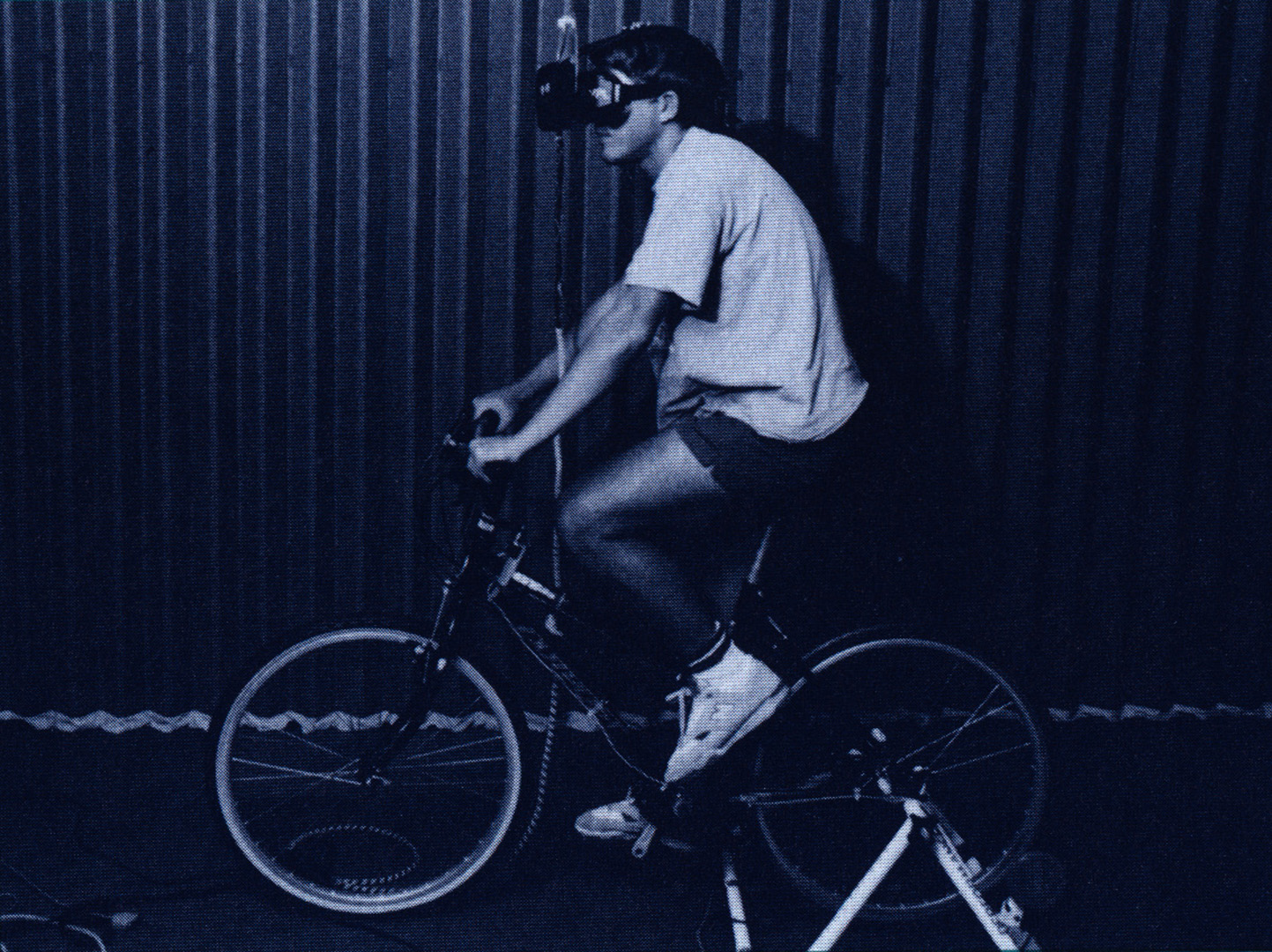“A Mountain Bike with Force Feedback for Indoor Exercise” by Erikson, Ohbuchi, State and Taylor
Conference:
Experience Type(s):
Title:
- A Mountain Bike with Force Feedback for Indoor Exercise
Program Title:
- Demonstrations and Displays
Presenter(s):
Description:
The goal of this application is to create an interesting and interactive virtual world that makes vigorous exercise entertaining and effective, and encourages experimentation with intuitive navigation in a familiar virtual world.
The application uses a stationary 10-speed bicycle with a computer-controlled eddy current resistance device attached to the rear wheel. As the user rides around, the simulation adjusts the pedaling resistance according to the slope of the land and the type of terrain. The rider, wearing a head-mounted display, can look about the environment. Collision detection prevents moving through trees and other obstacles.
A variety of scenarios can be available to enhance the virtual world experience. Various objects are placed in the virtual world to provide small, easily achieved goals during the exercise routine.
Flocks of birds can accompany the rider, planes can fly overhead trailing banners, various bulletin boards can be posted and read during the ride, and trees can be placed to create an obstacle course.
The end result is an exercise experience that is far more entertaining and interactive than the stationary exercise bike commonly used today. This method of navigation in a virtual world may also be easier to learn and more natural than the commonly used methods with joysticks and “flying” metaphors
The bicycle is a standard 10-speed mounted on a stationary platform. The back wheel is connected to a RacerMate Compu-Trainer, a computer-controlled eddy current resistance device that varies the pedaling difficulty.
Directional changes are sensed by a rotary encoder attached to the handlebars of the bicycle.
A head-mounted display is used instead of a large-projection television screen because immersion of the viewer in the virtual world is thought to be enhanced by the Eyephone’s wider field of view, and because it allows the rider to look around.
The use of a bicycle as an input device is a natural and effective method for traveling in a virtual world. In contrast with the data-glove and the three-dimensional mouse, the bicycle is a familiar mechanism that can be quickly understood by any user. Steering by using handlebars and controlling the speed of “flight” by pedaling and braking are aspects of virtual locomotion that do not need to be explained in any great detail to a standard user.
By incorporating force feed-back, a realistic bike ride can be achieved by having the computer adjust the pedaling resistance. If a user is bicycling uphill, or is trying to ride through mud, the computer increases the pedaling impedance. By creating a variety of paths of varying degrees of difficulty, challenging and entertaining scenarios can be designed to enhance an exercise routine.
Other Information:
Hardware: VPL Eyephone models 1 2, Polhemus Navigational Sciences 3Space magnetic tracker, Pixel-Planes 5, Macintosh IIci, mountain bike
Software: UNC-developed software
Application: Entertainment and recreation
Type of System: Player, single or networked
Interaction Class: Immersive, inclusive





